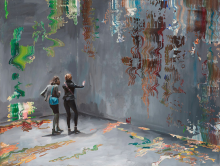At the Americans for the Arts’ Annual Convention this past June, quite a few members voiced concern about the upcoming U.S. Census. In many communities, there is worry that an inaccurate count could negatively impact towns, cities, regions, and even states, and disproportionately affect people who are already marginalized. This blog is meant to give information on the Census, its impact, and what arts and culture agencies across the United States are doing to ensure a comprehensive and equitable count. The U.S. Census is a consequential tool for distributing time, attention, and money in all sorts of ways—including ways that are deeply impactful on the arts. It is also an increasingly politicized tool, and as we round the corner into the 2020 U.S. Census, it is important to understand what the U.S. Census is, what it influences, what the implication of certain proposed changes could be both generally and for the arts, and how arts and culture agencies and organizations are mobilizing to ensure a fair, full, and unthreatening U.S. Census count.
Read More

























